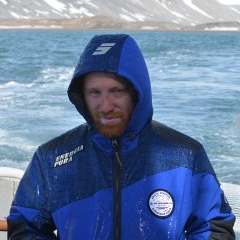Unmanned Marine Vehicles
A special issue of Journal of Marine Science and Engineering (ISSN 2077-1312). This special issue belongs to the section "Ocean Engineering".
Deadline for manuscript submissions: closed (10 September 2020) | Viewed by 56307
Special Issue Editors
Interests: marine robotics; marine data acquisition systems; polar robotics; polar data acquisition systems
Special Issues, Collections and Topics in MDPI journals
Interests: environmental monitoring; marine robotics applications; data management
Special Issues, Collections and Topics in MDPI journals
Interests: marine robotics design; marine vehicles design; marine propulsion; environmental monitoring
Special Issues, Collections and Topics in MDPI journals
Special Issue Information
Dear Colleagues,
Water covers nearly 70% of the Earth’s surface, and throughout history, oceans, seas, lakes, rivers, etc., have been a fundamental source of food, energy, transport, and commerce. Notwithstanding this, due to the risky and difficult environment, more than 80% of the oceans are nowadays still unexplored and unmapped. In recent decades, the use of robotic vehicles has become increasingly widespread for helping and substitution of human operators working at sea. In particular, unmanned marine vehicles (UMVs) have allowed for the automation of many dangerous tasks that were previously carried out manually, either underwater or on the surface. In fact, UMVs are the key tools that will allow human beings to explore, operate, protect, and carry out the sustainable exploitation of oceans in the near future. However, there continues to be significant challenges in this field: Nowadays, there is a stronger and stronger need for increased autonomy to perform tasks over large spatial and temporal durations, the demand to carry out increasingly complex operations in an intelligent way, in addition to an ever-growing need for UMVs to cooperate and interact with the environment, other robots, or human beings to succeed in performing very complicated tasks.
The aim of this Special Issue of JMSE is to welcome papers that address new developments in the field of unmanned marine vehicles. Topics of interest include but are not limited to:
- Unmanned underwater vehicles (UUVs);
- Autonomous underwater vehicles (AUVs);
- Remotely operated vehicles (ROVs);
- Unmanned surface vehicles (USVs);
- Unmanned semi-submersible vehicles (USSVs);
- Unmanned ships;
- Gliders;
- Swarms of unmanned marine vehicles.
Special attention will be devoted to papers including original works which are supported by experimental results, especially by at-sea trials.
Dr. Gabriele Bruzzone
Dr. Roberta Ferretti
Dr. Angelo Odetti
Guest Editors
Manuscript Submission Information
Manuscripts should be submitted online at www.mdpi.com by registering and logging in to this website. Once you are registered, click here to go to the submission form. Manuscripts can be submitted until the deadline. All submissions that pass pre-check are peer-reviewed. Accepted papers will be published continuously in the journal (as soon as accepted) and will be listed together on the special issue website. Research articles, review articles as well as short communications are invited. For planned papers, a title and short abstract (about 100 words) can be sent to the Editorial Office for announcement on this website.
Submitted manuscripts should not have been published previously, nor be under consideration for publication elsewhere (except conference proceedings papers). All manuscripts are thoroughly refereed through a single-blind peer-review process. A guide for authors and other relevant information for submission of manuscripts is available on the Instructions for Authors page. Journal of Marine Science and Engineering is an international peer-reviewed open access monthly journal published by MDPI.
Please visit the Instructions for Authors page before submitting a manuscript. The Article Processing Charge (APC) for publication in this open access journal is 2600 CHF (Swiss Francs). Submitted papers should be well formatted and use good English. Authors may use MDPI's English editing service prior to publication or during author revisions.
Keywords
- Unmanned underwater vehicles (UUVs)
- Autonomous underwater vehicles (AUVs)
- Remotely operated vehicles (ROVs)
- Unmanned surface vehicles (USVs)
- Unmanned semi-submersible vehicles (USSVs)
- Unmanned ships
- Gliders
- Swarms of unmanned marine vehicles







